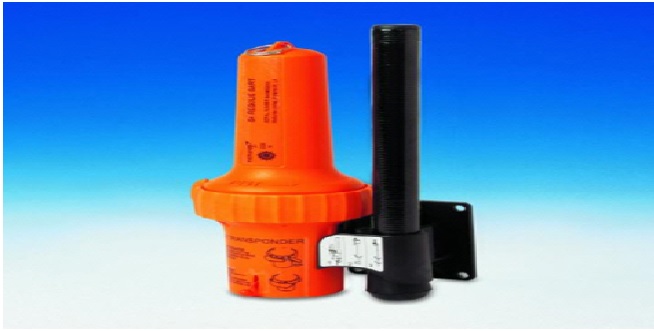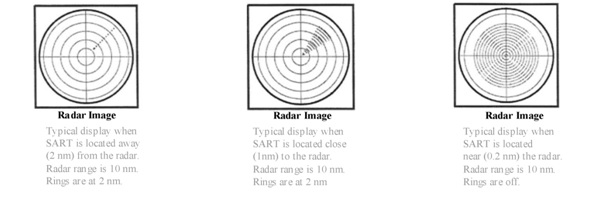A Search and Rescue Radar Transponder (SART) is an electronic device that automatically reacts to the emission of a radar. SART transponders are used to ease the search of a ship in distress or a liferaft.
A Search And Rescue Radar Transponder is a self-contained, devices may be either a radar-SART, or a GPS-based AIS-SART (automatic identification system SART). This equipment basically performs the job of a signal man. It helps in finding out the location of the ship when it is lost. This gives the exact location of the ship.
The radar-SART is used to locate a survival craft or distressed vessel by creating a series of dots on a rescuing ship’s radar display. A SART will only respond to a 9 GHz X-band (3 cm wavelength) radar. It will not be seen on S-band (10 cm) or other radar. Shipboard Global Maritime Distress Safety System (GMDSS) include one or more search and rescue locating devices. The radar-SART may be triggered by any X-band radar within a range of approximately 8 nautical miles.

The SART is activated manually so that it will thereafter respond when interrogated. When activated in a distress situation, a SART responds to radar interrogation by transmitting a signal which generates as a line of 12 blips code on a radar screen outward from the SART’s position along its line of bearing displayed on the Radar-Plan Position Indicator (PPI), the spacing between each pair of dots will be 0.64 nautical mile.
As the search craft approaches as to within about 1 nautical mile of the SART, the blip dots will change into wide arcs, and even become complete circles as the SART is closed and become continually triggered.
This is useful warning to the search craft to slow down.

This distinctive and unique radar signal is easily recognized and is therefore much easier to spot than a signal echo such as from a radar reflector. This ensures that the worst night mare of the sailor does not come true. SART is designed in such a way that they can stay afloat in water for hours even if the ship or the craft they were fitted to has drowned.
Features of SART:



what is the frequency in which sart gives the signal?